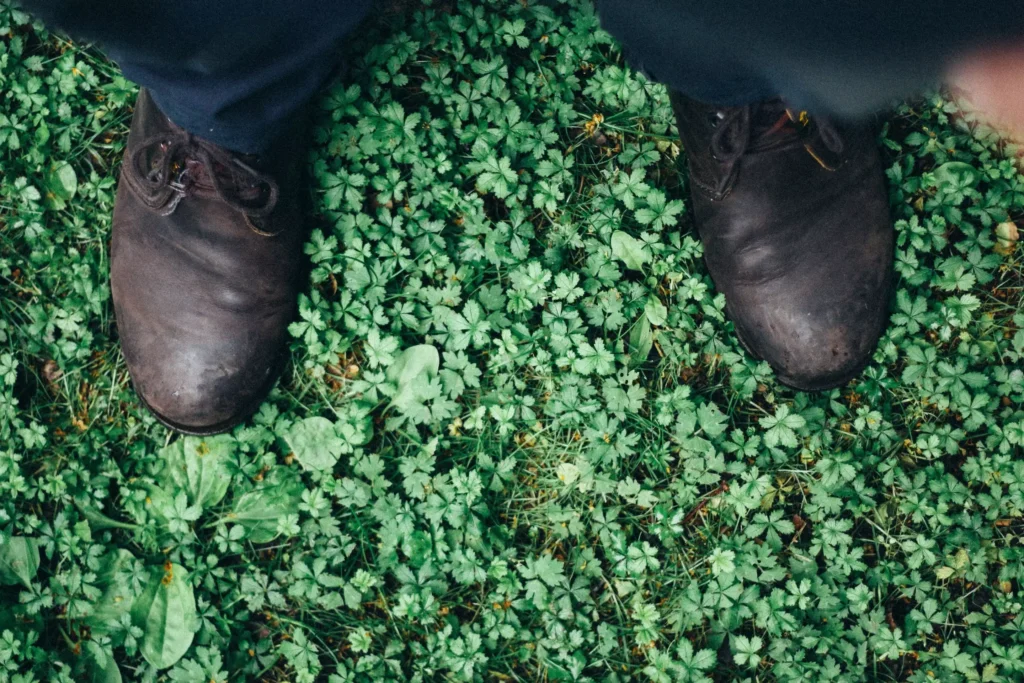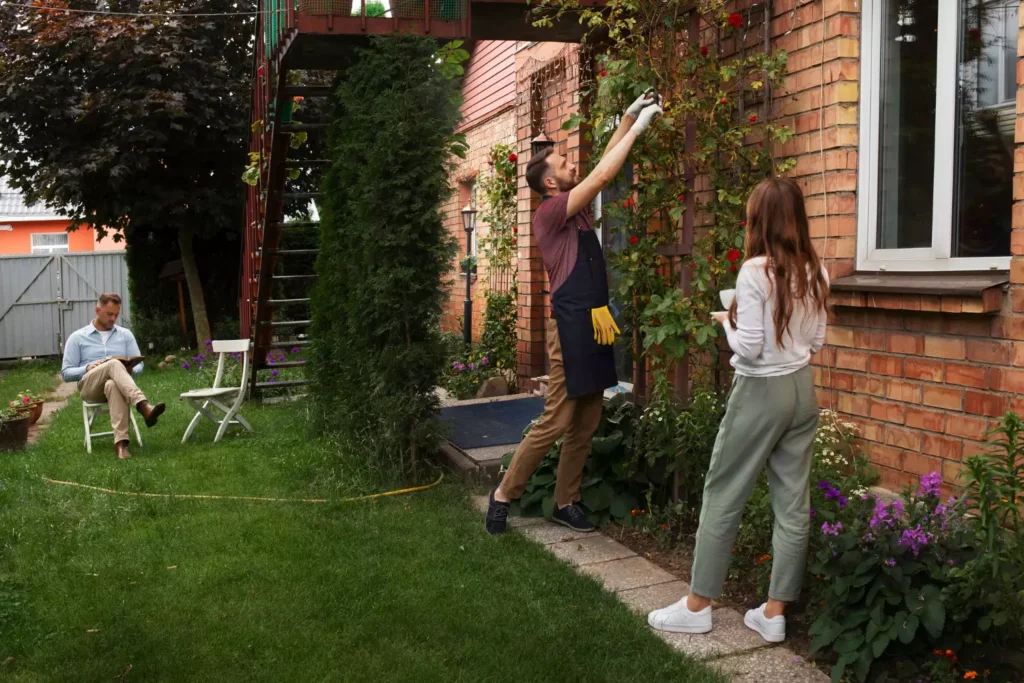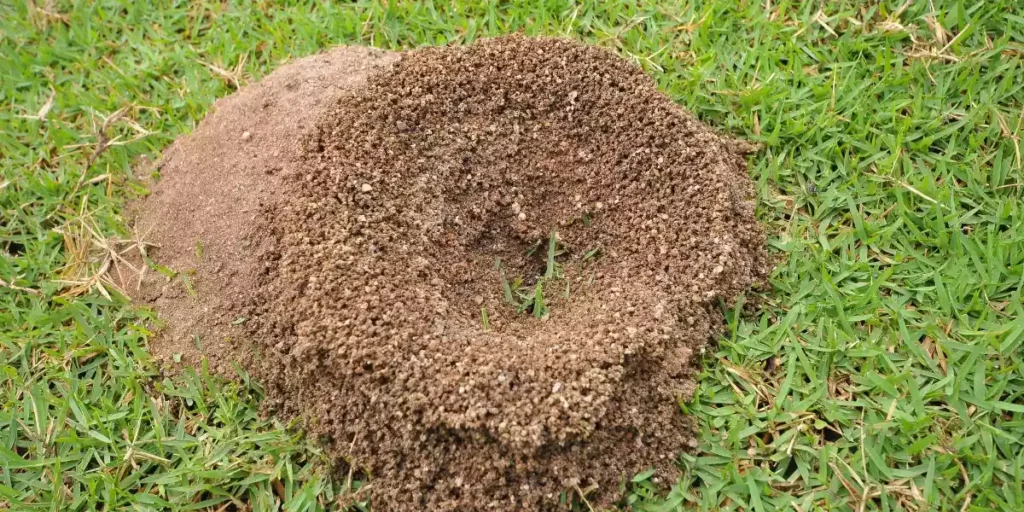Are you tired of looking at your patchy, thin lawn? Are you dreaming of a lush, green carpet of grass that will make your neighbors green with envy? Well, look no further! In this article, we will show you how to overseed your lawn and achieve those beautiful results you’ve been longing for.
But first, let’s answer the burning question: what does it mean to overseed a lawn?
Overseeding is the process of spreading new grass seed over an existing lawn to fill in bare patches and make the grass thicker. It’s like giving your lawn a well-deserved makeover!
In this comprehensive guide, we will walk you through the steps of overseeding an existing lawn, including when is the best time to do it and common mistakes to avoid. We will also address some frequently asked questions, such as whether you can mix different types of grass seed and if grass seed will grow if you simply throw it down.
So, grab your gardening gloves and get ready to transform your lawn into a vibrant, healthy oasis. Let’s dive in and discover the practical tips that will help you achieve those stunning results you’ve always dreamed of!
Key Takeaways
- Overseeding is a process of spreading new grass seed over an existing lawn to fill in bare patches and make the grass thicker.
- Before overseeding, it may be necessary to dethatch and aerate the lawn to ensure successful seed germination.
- Choose grass seed that is compatible with the grass type already growing in your yard.
- Water the lawn deeply after spreading the seeds and fertilizer, and continue watering lightly every day until the new grass is as tall as the established grass.
What does it mean to overseed a lawn?
So, you’re looking to overseed your lawn to fill in those bare patches and improve the density of your turf, huh? Well, overseeding is like giving your lawn a fresh start without tearing up the existing turf or soil. It allows you to enhance your lawn’s color and establish improved grass varieties. It’s a simple and effective way to rejuvenate your lawn and make it look lush and healthy.
By spreading grass seed directly onto your existing lawn, you can fill in any thin or bare areas, promote thicker grass growth, and improve the overall appearance of your lawn. Overseeding is also a great way to introduce new grass varieties that may be more resistant to pests, diseases, or environmental stressors.
With the right techniques and proper lawn care, you can achieve impressive results and enjoy a beautiful, vibrant lawn.
Overseeding an existing lawn
To overseed an existing lawn, start by mowing your lawn shorter than usual to give the new seeds better access to the soil.
Next, consider dethatching your lawn if there’s a buildup of dead grass and debris, as this can hinder seed germination.
Aerate your lawn to improve soil compaction and allow the seeds to penetrate deeper.
Then, remove any debris with a rake to ensure proper seed-to-soil contact.
Finally, enhance the soil by adding a layer of enriched topsoil about 1/4 inch thick on top of the existing grass.
Mow your lawn short
Start by mowing your lawn shorter than usual, around 1-2 inches, to prepare for overseeding. Bag the clippings to ensure the grass seed makes direct contact with the soil for optimal growth.
By mowing the grass shorter, you create a better environment for the new seeds to establish themselves. This allows the seeds to have better access to sunlight and water, which are essential for germination and growth. Removing the clippings also prevents them from smothering the newly seeded areas.
Additionally, mowing the lawn short helps to level the surface, making it easier to spread the grass seed evenly.
Overall, mowing your lawn short is an important step in preparing for overseeding and setting the stage for a lush and healthy lawn.
Dethatch your lawn
However, before you begin overseeding, you may be wondering why it’s necessary to dethatch your lawn.
Thatch, which is a layer of organic components like leaves and stems, can build up between the grass and soil over time. This layer can prevent proper air circulation and water absorption, making it difficult for seedlings to germinate and take root.
That’s why it’s important to dethatch your lawn before overseeding. By vigorously raking your lawn with a metal rake or using a dethatching machine, you can remove excessive thatch and debris. This process not only helps to improve air circulation and water absorption but also loosens and breaks up the soil, creating optimal conditions for the new grass seeds to successfully establish themselves.
So don’t skip the dethatching step if you want to achieve the best results when overseeding your lawn.
Aerate your lawn
After dethatching your lawn, it’s essential to aerate the soil by poking holes with a core aerator machine. This will create optimal conditions for the new grass seeds to take root and thrive. Aeration helps to break up compacted soil, improve drainage, and increase air circulation to the grassroots.
By creating these small holes, you allow the grass seeds to penetrate the soil more easily and access the necessary nutrients and moisture. Additionally, aeration promotes the growth of beneficial microorganisms in the soil, which can aid in the decomposition of thatch and improve overall soil health.
Make sure to use a core aerator machine that removes plugs of soil, rather than a spike aerator, which can further compact the soil. Aerate your lawn once a year, or as needed, to maintain a healthy and vibrant lawn.
Remove the debris with a rake
Before we begin the process of overseeding, let’s grab a rake and clear away any debris like grass clippings, fallen leaves, and twigs that could hinder the seed-to-soil contact and prevent the new grass from taking root effectively.
Raking the yard is an important step in preparing the soil for overseeding. As you rake, make sure to dig into the ground a bit, loosening the top layer of soil. This will create a better environment for the grass seed to germinate and establish strong roots.
Additionally, removing debris will ensure that the seed has direct contact with the soil, allowing it to absorb moisture and nutrients more effectively. By taking the time to clear away debris, you’re setting the stage for a successful overseeding process and promoting healthy growth in your lawn.
Enhance it with some enriched topsoil
Now that you’ve removed the debris from your lawn, it’s time to enhance it with some enriched topsoil.
Enriched topsoil is a mixture of nutrient-rich compost and soil that will provide the new grass with the nutrients it needs to grow quicker and thicker.
To add the topsoil, grab your fertilizer spreader and evenly spread a layer that’s about 1/4 inch thick on top of your existing grass. This will create a nourishing bed for the new grass seeds to take root and thrive.
If you’re using a grass seed mixture that already includes topsoil, you can skip this step and move on to spreading the seed.
By adding enriched topsoil to your lawn, you’re setting the stage for a healthy and vibrant lawn that’ll be the envy of the neighborhood.
Seed the lawn
To achieve a lush and vibrant lawn, it’s time to spread the grass seed mixture evenly across your yard using a fertilizer spreader. This will ensure that every inch of soil has the potential to nurture thriving new grass. Follow these steps to seed your lawn effectively:
- Prepare the spreader: Fill the fertilizer spreader with your chosen grass seed mixture. Make sure to adjust the spreader settings according to the recommended application rate on the seed package.
- Start spreading: Begin walking the spreader across your lawn in rows, following the same pattern you use when mowing. This ensures even distribution of the grass seed mixture.
- Overlap for consistent coverage: To avoid missed spots, overlap each pass of the spreader slightly. This’ll help ensure that every inch of soil receives the necessary amount of seed for optimal germination.
- Finish strong: Once you’ve covered the entire lawn, go back over any areas that may have received less seed. This’ll help ensure consistent coverage and promote uniform growth throughout your lawn.
By following these steps, you’ll be well on your way to achieving a lush and healthy lawn through effective overseeding.
Add some fertilizer
Ensure your newly seeded lawn gets off to a strong start by spreading a lawn starter fertilizer with your trusty fertilizer spreader. Lawn starter fertilizers are specially formulated to help the seedlings establish strong roots and sprout faster. They provide the necessary nutrients for healthy growth and development.
When choosing a fertilizer, it’s important to avoid ‘weed and feed’ combinations as the herbicides in these products can hinder the growth of the new grass. If your seed mixture already contains fertilizer, you can skip this step. By adding a lawn starter fertilizer, you’re giving your newly overseeded lawn the best chance for success. The fertilizer will provide the necessary nutrients and support the growth of strong, healthy grass.
So grab your fertilizer spreader and give your lawn the boost it needs for lush and vibrant growth.
Watering
Watering is crucial for the success of your newly overseeded lawn because it provides the necessary moisture for the seeds to germinate and establish strong roots, leading to a lush and vibrant lawn. Follow these tips to ensure proper watering for your overseeded lawn:
- Light Waterings: For the first week, water your lawn lightly about twice a day to keep the soil constantly moist. This will promote seed germination.
- Heavy Waterings: After the first week, increase the amount of water you apply to your lawn for about a week. This will help the new grass establish deeper roots.
- Prevent Wilting: After the first two weeks, water your lawn as needed to prevent wilting. This will promote a healthy lawn and encourage further root growth.
- Healthy Roots, Healthy Lawn: By following this watering schedule, you’ll promote healthy roots, which in turn will lead to healthy grass and a beautiful lawn.
Remember to adjust your watering schedule based on the weather conditions and the specific needs of your lawn. With proper watering, your overseeded lawn will thrive and become the envy of the neighborhood.
Let it rest
After all the hard work of overseeding your lawn, it’s time to let it rest and allow nature to work its magic. Once you’ve spread the seed and watered it properly, it’s important to avoid excessive traffic or activity on the newly overseeded areas. This will give the seeds the opportunity to germinate and establish strong roots without being disturbed.
Limiting foot traffic and keeping pets off the lawn will prevent any damage or disruption to the new grass growth. Additionally, it’s crucial to resist the temptation to mow the lawn too soon. Wait until the grass blades reach about four inches in height before mowing for the first time post-seeding. This will allow the new grass to establish itself and promote healthy growth.
By giving your newly overseeded lawn the rest it needs, you’ll increase your chances of achieving the lush and healthy lawn you desire.
When should you overseed your lawn?
To achieve the best results when overseeding your lawn, it’s important to know when to do it based on the type of grass you have. If you have cool-season grass, the ideal time to overseed is in the fall. This is particularly in early September when the air is cool and the soil is still warm. However, if you miss the fall window, early spring is the next best time to overseed. This is around March or April. Make sure the soil temperature has consistently reached 55℉ for successful germination.
Cool-Season Grass
Late August to early September is the best time to overseed cool-season grasses, giving your lawn a fresh boost of green. During this time, temperatures begin to moderate as the days get shorter, creating ideal conditions for grass seed germination and establishment.
To overseed your cool-season lawn effectively, follow these tips:
- Core aerate the lawn to open up the soil and create pockets for seed-to-soil contact.
- Use high-quality grass seed specifically formulated for cool-season grasses.
- Spread the seed evenly across the lawn at the recommended rate.
- Water the lawn regularly to keep the soil moist, but avoid overwatering to prevent seed washout.
- Apply a fertilizer with a balanced analysis, such as 16-4-8, to provide essential nutrients for the new grass seedlings.
By following these steps, you can ensure successful overseeding and achieve a thicker, healthier lawn.
Warm-Season Grass
Despite the scorching summer heat, you can create a vibrant and lush lawn that will leave your neighbors green with envy by overseeding warm-season grass in spring or early summer. Warm-season grasses, such as Bermuda, Bahia, Zoysia, and St. Augustine, thrive in the southern regions of the United States during the spring and summer months.
To overseed your warm-season lawn, wait until all danger of frost has passed and soil temperatures are above 65°F at 3 inches below the surface. Use a lawn starter fertilizer for new plantings and a complete lawn food with controlled release nitrogen for established lawns.
Avoid overseeding centipede lawns with annual or perennial ryegrass, as this can weaken the root system. Follow these tips to ensure a healthy and beautiful warm-season lawn.
Some common mistekes
One of the most common mistakes to avoid when overseeding your lawn is using the wrong type of seed, as it may not be compatible with your lawn, climate, and sun patterns. It’s important to choose a seed that is specifically designed for your grass type and environmental conditions.
Another mistake to avoid is ignoring the recommended seeding rates. Using the proper amount of seed for your project will increase your chances of success. Keep in mind that growing a lawn from scratch or repairing a completely dead spot will require twice as much seed as filling in a thinning area.
Additionally, timing is crucial when overseeding. It’s tempting to overseed as soon as you notice thinning grass, but proper overseeding should only be done at the right time of year for your grass type.
Lastly, it’s best to avoid using weed treatments directly after overseeding. These products can’t distinguish between new grass and weeds, so it’s safer to use an all-natural fertilizer.
Can you overseed before or after rain?
Before you break out the seed, take a quick peek at the weather forecast to ensure there’s no rain in sight, as overseeding before or after rain can hinder the establishment of the new grass seed.
It’s best to wait for the lawn to dry before overseeding, as wet conditions can prevent the seeds from properly germinating and taking root. If you overseed just before a rainstorm, the heavy rain can wash away the seeds, leaving your efforts futile.
On the other hand, overseeding right after a rainstorm can create muddy conditions that make it difficult for the seeds to penetrate the soil and establish themselves.
To give your grass seed the best chance of success, aim to overseed when the weather is dry and there is no rain in the immediate forecast.
Can you mix different types of grass seed?
Now that you know when to overseed your lawn, let’s talk about whether you can mix different types of grass seed. The answer is yes, and in fact, it’s actually better to mix different grasses rather than planting only one type.
By combining the strengths of different grass types, you can make your lawn more tolerant of various conditions like traffic, drought, heat, or shade. For example, Kentucky bluegrass and fescue make a great combination. Fescue is more drought-tolerant, while Kentucky bluegrass spreads to fill bare spots and repair damage. They compensate for each other’s weaknesses, resulting in a thick and healthy lawn.
Another option is mixing Bermudagrass and perennial ryegrass, especially in the transition zone. Bermuda stays green in summer while ryegrass is dormant, and ryegrass stays green in winter while Bermuda is dormant.
So, don’t be afraid to mix different grass seed types for a more resilient and beautiful lawn.
Will grass seed grow if I just throw it down?
Want a quick and easy way to grow grass? Just throw down the seed and watch it sprout, right? Well, not exactly. While grass seed may grow if you simply throw it on the ground, the success of germination will be much different compared to when you do the right preparation and sowing technique.
Proper soil preparation is essential for successful grass seed growth. This includes removing any debris, loosening the soil, and adding amendments if necessary. Additionally, ensuring good seed-to-soil contact is crucial. Raking the soil and lightly pressing the seed into the ground will help with this.
Watering is also important to keep the seed moist throughout the germination process. So, while throwing down grass seed may result in some growth, taking the time to properly prepare and sow the seed will lead to much better results.
How much does it cost to overseed a lawn?
Discover the cost of giving your yard a lush makeover with overseeding. If you’re considering overseeding your lawn, it’s important to understand the potential costs involved.
Here’s what you need to know:
- Size of the lawn: The cost of overseeding a lawn will depend on its size. Larger lawns will require more seed and labor, resulting in a higher cost.
- Seed type: The type of grass seed you choose can also affect the cost. Some varieties may be more expensive than others, so be sure to consider your budget when selecting the seed.
- Labor and equipment: If you decide to hire a professional to overseed your lawn, you’ll need to factor in the cost of labor. Additionally, you may need to rent or purchase equipment such as a spreader or aerator, which can add to the overall cost.
- Additional treatments: Depending on the condition of your lawn, you may need to invest in additional treatments such as soil amendments or weed control, which can increase the cost of overseeding.
Overall, the cost of overseeding a lawn can vary widely depending on several factors. It’s recommended to get quotes from professionals and consider your budget before making a decision.
What Is the Difference Between Reseeding and Overseeding a Lawn?
Enhance the lushness of your yard by understanding the difference between reseeding and overseeding, two methods that can transform your lawn into a vibrant and healthy oasis.
While both reseeding and overseeding involve adding grass seed to your lawn, there is a slight distinction between the two.
Reseeding is primarily used to patch up brown or dead spots in your lawn. It involves removing the damaged grass and soil, preparing the area, and then sowing new grass seed. This method is ideal for addressing specific areas that need attention.
On the other hand, overseeding is a routine maintenance technique used to thicken an existing lawn. It involves spreading grass seed over the entire lawn to encourage a denser turf. Overseeding can help fill in thin or bare patches, increase the overall thickness of the grass, and improve the lawn’s ability to withstand various issues.
By understanding the difference between reseeding and overseeding, you can choose the method that best suits your lawn’s needs and achieve a vibrant, healthy yard.
Conclusion
In conclusion, overseeding your lawn is a crucial step in maintaining its health and appearance. By filling in bare patches and making the grass thicker, you can create a lush and vibrant lawn.
Remember to choose the right grass seed for your existing grass type and follow the proper steps, such as mowing, removing debris, and applying fertilizer.
Watering the lawn daily until the new grass grows tall will ensure successful results. So, don’t wait any longer, give your lawn the care it deserves and enjoy the benefits of a beautifully overseeded lawn. Your neighbors will be green with envy!




